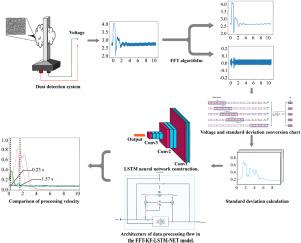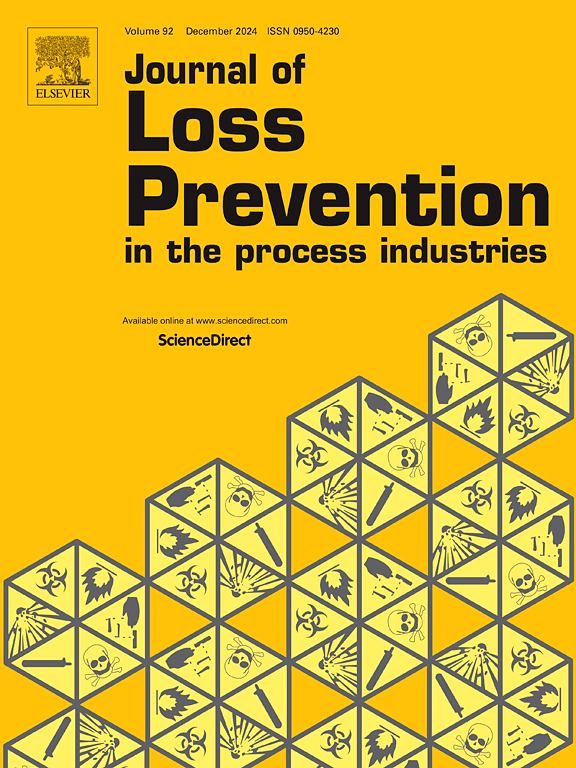基于 LSTM-Kalman 滤波器的铝尘浓度检测
IF 3.6
3区 工程技术
Q2 ENGINEERING, CHEMICAL
Journal of Loss Prevention in The Process Industries
Pub Date : 2024-10-23
DOI:10.1016/j.jlp.2024.105468
引用次数: 0
摘要
工业粉尘排放具有严重危害,包括呼吸道问题和爆炸风险。传统的粉尘浓度检测方法往往会受到环境因素的影响。本研究介绍了一种新颖的 FFT-KF-LSTM-NET 模型,利用 128 组静电感应测量数据预测高浓度铝粉水平。通过应用快速傅立叶变换(FFT)消除低频干扰,整合用于高级时间序列分析的长短时记忆(LSTM)网络,以及使用卡尔曼滤波器(KF)实现模型的快速收敛,该方法显著提高了预测精度。该模型的平均平方误差 (MSE) 提高了 82%,降至 0.1336,优于传统方法。此外,通过对静电感应传感器感应区域内带电尘埃粒子产生的电压信号进行建模,并将电压信号的一阶导数作为学习特征,该模型的预测速度从 1.5 秒-2 秒提高到 0.5 秒,抗干扰能力也得到了提高。这些进步使 FFT-KF-LSTM-NET 模型成为实时、可靠地检测工业环境中粉尘浓度的重要工具。本文章由计算机程序翻译,如有差异,请以英文原文为准。

Aluminum dust concentration detection based on LSTM-Kalman filter
Industrial dust emissions present serious hazards, including respiratory issues and explosion risks. Traditional dust concentration detection methods are often compromised by environmental factors. This study introduces a novel FFT-KF-LSTM-NET model to predict high-concentration aluminum powder levels, utilizing 128 sets of electrostatic induction measurement data. By applying the Fast Fourier Transform (FFT) to eliminate low-frequency interference, integrating Long Short-Term Memory (LSTM) networks for advanced time series analysis, and using the Kalman Filter (KF) for rapid model convergence, this approach significantly enhances prediction accuracy. The model achieves an 82% improvement in Mean Squared Error (MSE), reducing it to 0.1336, outperforming traditional methods. Furthermore, by modeling the voltage signal generated by charged dust particles in the electrostatic induction sensor's sensing area and using the first derivative of the voltage signal as a learning feature, the model's prediction speed is increased from 1.5 s-2 s–0.5 s, with improved anti-interference capabilities. These advancements position the FFT-KF-LSTM-NET model as a crucial tool for real-time, reliable dust concentration detection in industrial environments.
求助全文
通过发布文献求助,成功后即可免费获取论文全文。
去求助
来源期刊
CiteScore
7.20
自引率
14.30%
发文量
226
审稿时长
52 days
期刊介绍:
The broad scope of the journal is process safety. Process safety is defined as the prevention and mitigation of process-related injuries and damage arising from process incidents involving fire, explosion and toxic release. Such undesired events occur in the process industries during the use, storage, manufacture, handling, and transportation of highly hazardous chemicals.

 求助内容:
求助内容: 应助结果提醒方式:
应助结果提醒方式:


